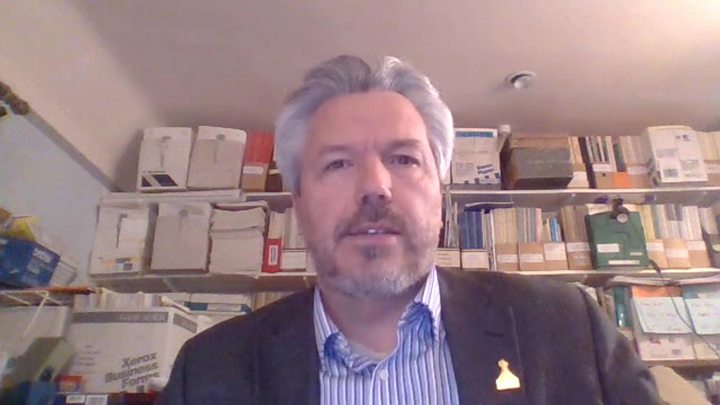Russian spy: What are Novichok agents and what do they do?

A former Russian spy and his daughter were poisoned by a chemical that is part of a group of nerve agents known as Novichok, UK Prime Minister Theresa May has said.
Sergei Skripal and his daughter Yulia remain critically ill after the attempted murder in Salisbury on 4 March.
The chemical was identified by experts at the Defence Science and Technology Laboratory (DSTL) at Porton Down.
So what do we know about this group of military-grade nerve agents?
1) They were developed in the Soviet Union
The name Novichok means "newcomer" in Russian, and applies to a group of advanced nerve agents developed by the Soviet Union in the 1970s and 1980s.
They were known as fourth-generation chemical weapons and were developed under a Soviet programme codenamed "Foliant".
According to a senior defector, the Soviets used the plant to produce and test small batches of Novichok. These nerve agents were designed to escape detection by international inspectors.
- What are nerve agents and what do they do?
- Highly likely Moscow behind attack
- What now for the UK/Russia relationship?
2) They are more toxic than other agents
One of the group of chemicals known as Novichoks - A-230 - is reportedly 5-8 times more toxic than VX nerve agent.
"This is a more dangerous and sophisticated agent than sarin or VX and is harder to identify," says Professor Gary Stephens, a pharmacology expert at the University of Reading.
A number of variants of A-230 have been manufactured. One of these experimental chemicals - A-232 - was reportedly used by the Russian military as the basis for a chemical weapon, known as Novichok-5.

3) Novichoks exist in various forms
While some Novichok agents are liquids, others are thought to exist in solid form. This means they could be dispersed as an ultra-fine powder.
Some of the agents are also reported to be "binary weapons", meaning the nerve agent is typically stored as two less toxic chemical ingredients. When these are mixed, they react to produce the active toxic agent.
This makes the ingredients easier to transport, handle and store as they only become fully toxic when mixed.
"One of the main reasons these agents are developed is because their component parts are not on the banned list," says Professor Stephens. "It means the chemicals that are mixed to create it are much easier to deliver with no risk to the health of the courier."
4) Some can take effect very quickly
The Novichoks were designed to be more toxic than other chemical weapons, so some versions would begin to take effect rapidly - on the order of 30 seconds to two minutes.
The main route of exposure is likely to be through inhalation, though they could also be absorbed through the skin.
However, in powder form an agent might take longer to act.
5) The symptoms are similar to those of other nerve agents
It is thought Novichok agents have similar effects to other nerve agents.
This means they act by blocking the messages from the nerves to the muscles, causing a collapse of many bodily functions.
Symptoms include white eyes, as the pupils become constricted, convulsions, drooling and, in the worse cases, coma, respiratory failure and death.
These agents primarily cause a slowing of the heart and restriction of the airways, leading to death by asphyxiation.
Some Novichok variants have been specifically designed to resist standard nerve agent antidotes.
If a person is exposed to it, their clothing should be removed and their skin washed with soap and water. Their eyes should be rinsed and they should be given oxygen.